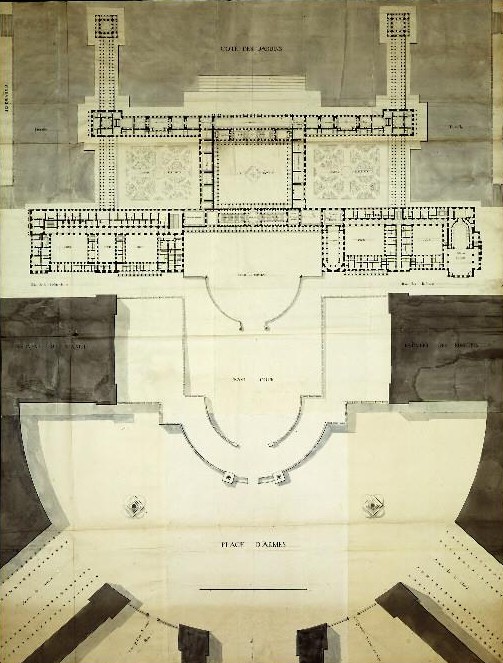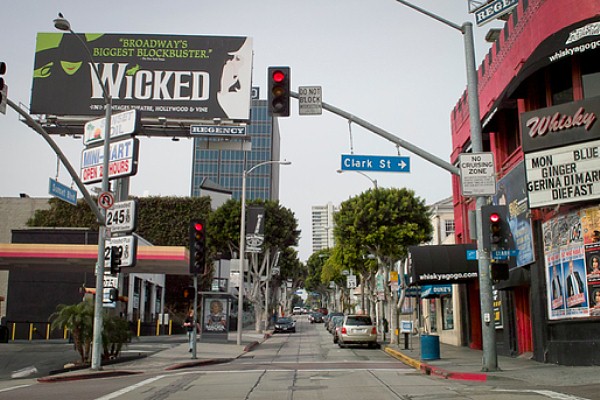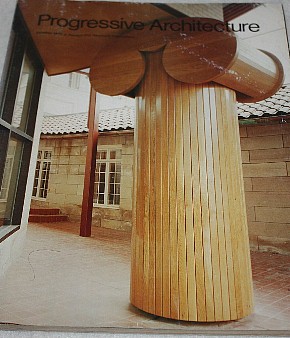2012.05.21 14:25
Need help identifying a building drawing! Please!
...the Pella Palace and its connection to the Versailles design by Boullée is actually something that I did not know of before today. I've known of the Boullée Versailles design for maybe like five years now--soon after... ...a link to the Lequeu collection at the French library website--I looked to see what else architectural was within the French library website and found all the Boullée drawings. The Versailles redesign was a project I've never seen before (I own several books on Boullée), and thus found it to be most intriguing.

| |

2012.08.01 10:53
Narrow Streets Los Angeles
I wouldn't call Yoon's project an exercise in fiction, rather an exercise in virtuality. Unfortunately, "Narrow Streets Los Angeles" follows the all-too-common notion of blurring the real and the virtual. After finally looking at the selection of narrowed streets, I understand what Eric means by "make it all seem cute"--there is indeed a distinct Los Angeles urbanity lost when the streets are no longer the width of almost rivers. The intersection of Cottman and Bustleton Avenues in Northeast Philadelphia actually reminds me a lot of LA (pictured on page 780 of The Harvard Design School Guide to Shopping), and, while surrounded by a plethora of narrow domestic streets, the busy intersection has a quite comfortable large scale fitting to its current nodal function.
Incidentally, Bustleton Avenue has its origin as an 'ancient' Indian trail, while Cottman Avenue started as a straight property line on the 1687 map of Pennsylvania.

Cottman Avenue is the line parallel and left of the red line above. The blue dot is where I'm sitting right now, and the meander either side of the red line is Pennypack Creek.
Regarding exercises in virtuality, I prefer it when the virtual is held more distinct from the real. For example, taking LA streets and mixing one side of a street with the side of another street, and either playing with the width or not, seems more interesting.
| |
2012.11.04 11:42
The Language of Architecture
For the most part, spoken languages still relate to quite specific geographic locations. Up until roughly 100 years ago, specific geographic locations, too, had their distinct architectures. Colonialism began to usurp 'native' architectures with European architectures. In the mid-20th century the 'International Style' became an architectural Esperanto.
Is architecture today composed mostly of many, many personal languages?
Otherwise:
Are most of architecture's languages now lost?
What present architectures still relate to specific geographic locations?
What architectures are bilingual?
What architectures are multilingual?
What architectures exist also in translation?
What architectures now exist only in translation ?
What architectures are lost in translation?
Who speaks slang architecture? And is slang architecture ever appropriate?
Does anyone ever order language-salad architecture? Maybe that tastes best on Pentecost.
"I love my architect[ure]s because they often manage to say something I haven't heard before."
2012.12.13 12:42
13 December
within the last twelve hours:
Writing Rome: Textual approaches to the city (again) . . . All Over the Map . . . "New Inquisitions on Architecture: From pluralism to narrative" . . . By leaving ideologies behind, architecture may fall into nihilism or else dissolve into a narrative dimension. Only through the mediation of a mythographic interpretation will the treatise and Utopia return to become part of the novel of architecture. . . . "Surrender: Ville Nouvelle Melun-Senart" . . . another, this time closer, look at Patent Office
Found out this morning I successfully bid on this...

October 1977
"In 1978 [sic], one of the covers of Progressive Architecture looked almost exactly like this, and the copy-cats were now uncontrollably out of the bag. I remember professors in school being literally afraid that students will start doing the same thing."
|